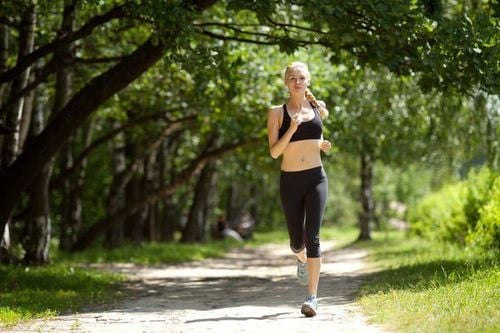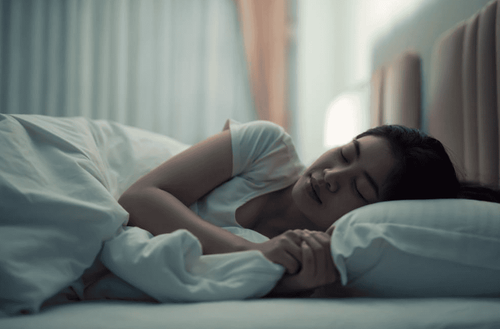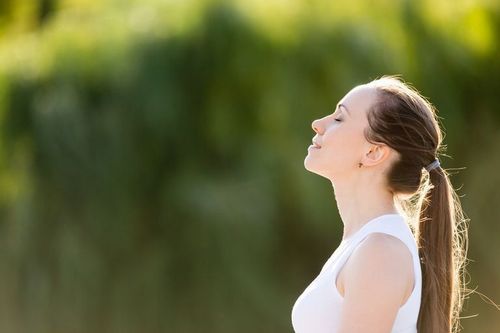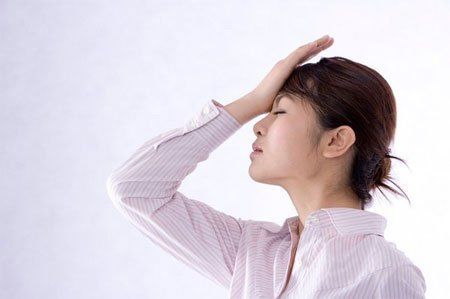This is an automatically translated article.
Certain exercises can help you relax and feel relieved, thanks to their ability to produce endorphins - chemicals in the brain that act as natural pain relievers - and also improve your ability to sleep. Today, breathing exercises are also considered very important to maintain mental fitness and it can reduce stress.1. The benefits of exercise to reduce anxiety
The physical benefits of exercise, fitness and disease prevention have been established for a long time, and doctors always recommend that everyone maintain daily physical activity.Exercise is also considered very important to maintain mental fitness and it can reduce stress. Studies show that exercise is very effective at reducing fatigue, improving alertness and focus, as well as enhancing overall cognitive function.
When stress affects the brain, the rest of the body feels the same. Just as your body feels better, so does your mind. Exercise and other physical activities produce endorphins - chemicals in the brain that act as natural pain relievers - and also improve sleep, thereby reducing stress.
Scientists have found that regular aerobic exercise has been shown to reduce overall stress levels, elevate and stabilize mood, improve sleep and improve self-esteem important. About 5 minutes of aerobic exercise can initiate an anti-anxiety effect.
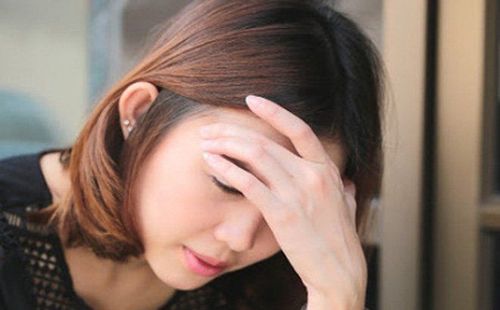
Khi căng thẳng ảnh hưởng đến não sẽ làm phần còn lại của cơ thể cũng cảm thấy bị tác động
2. The relationship of exercise to anxiety disorders
Stress and anxiety are a normal part of life, and today, anxiety disorders, which affect 40 million adults, are the most common mental illness in the United States. The benefits of exercise may extend beyond reducing stress to improving anxiety and related disorders.Psychologists studying how exercise reduces anxiety and depression show that a 10-minute walk can be as good as a 45-minute workout. Other studies also show that exercise can quickly improve depressed mood in many people. While the effects may be temporary, they demonstrate that a brisk walk or other simple activity can provide several hours of pain relief.
Science has also provided some evidence that physically active people have lower rates of anxiety and depression than sedentary people. Exercise can improve mental health by helping the brain better cope with stress. In one study, researchers found that people who exercised regularly vigorously were 25% less likely to develop depression or an anxiety disorder within the next 5 years.
According to some studies, regular exercise works as a medicine for some people to reduce symptoms of anxiety and depression. A vigorous workout session can help ease symptoms for hours, and a regular schedule can dramatically reduce them over time.
While exercise has positive effects for most people, some recent research suggests that, for some people, exercise may not have a positive effect on anxiety, depression or may not have a strong impact on long-term mental health. Like all forms of therapy, effects can vary: Some people may respond positively, others may find it doesn't improve their mood much, and some may just get it. modest short-term benefits. However, the researchers say that the beneficial effects of exercise on physical health are undisputed and that people should be encouraged to stay physically active
3. Practice breathing to reduce anxiety
Worry causes stress. In many cases, the stressful nature of anxiety can actually make the anxiety itself worse, leading to a negative feedback loop. This is especially true for people who experience "breathlessness" or shortness of breath during anxiety attacks.Learning to control your breathing during periods of high anxiety can help you manage anxiety more effectively. Deep breathing and other breathing techniques have been shown in many studies to help reduce anxiety, stress, and negative emotions in many people. By adding stress-relieving deep breathing exercises to your daily routine, you can reduce your anxiety symptoms easily and quickly.

Học cách kiểm soát hơi thở trong giai đoạn lo lắng cao độ có thể giúp bạn kiểm soát sự lo lắng hiệu quả hơn
4. Breathing exercises to help reduce anxiety
Anxiety-relieving breathing exercises will help you focus on the main cause of many physical anxiety symptoms. People with anxiety tend to breathe as high as their chest, resulting in shallow, "gasping" breathing. This can lead to hyperventilation, which includes symptoms such as shortness of breath, lightheadedness, and an inability to think straight. Controlling your breathing can minimize these symptoms and help you reduce symptoms of anxiety both mentally and physically.4.1 Deep or Abdominal Breathing Deep breathing fills your lungs, which slows breathing and prevents hyperventilation.
Step 1: On a comfortable surface, sit or lie down. Step 2: Place one hand on the ribs and the other on the abdomen, just below the ribs. Step 3: Inhale slowly through the nose and focus on filling the deepest parts of the lungs. Pay attention to your hands; the hand on your stomach should move, but not the hand on your chest. Step 4: Exhale through your mouth, pursed lips. Exhale all your air. You can repeat this exercise 3 to 10 times in one sitting. Don't try to get over it; The goal is to focus on your breath and slow it down. 4.2 Calm breathing Focusing on even and steady breathing can help as much as taking deep breaths. This exercise is a helpful way to calm yourself down if you're feeling severe anxiety or you suspect you're about to have a panic attack.
Step 1: Sit or lie down somewhere comfortable where you are fully supported, such as a bed or armchair. If you wear tight clothing that makes it hard to breathe, loosen those items. Step 2: Place your feet hip-width apart, such as spread out on the floor or knees bent in bed. Step 3: Keep your arms away from your sides, such as on the arms of a chair. Step 4: Breathe deeply and slowly through your nose and count to 5. If you can't count to 5, count as high as possible. Step 5: Without stopping or holding your breath, immediately start exhaling through your mouth counting to 5. Repeat this for up to 5 minutes.
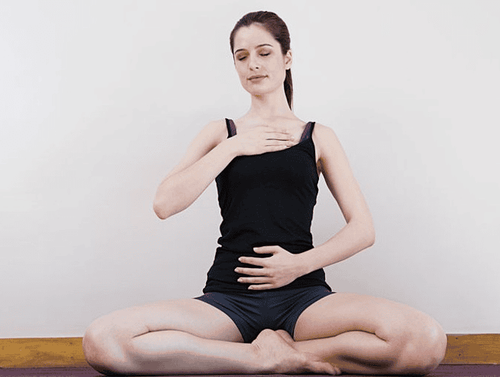
Hít thở sâu là quá trình làm đầy phổi của bạn, giúp làm chậm nhịp thở và ngăn ngừa tăng thông khí
Step 1: While sitting or lying comfortably, place one hand on your stomach and one hand on your chest. Step 2: Inhale deeply through the nose, expand the abdomen, count to 4. Step 3: Hold your breath for a count of 7. Step 4: Exhale through the mouth for a count of 8, focusing on fully emptying the lungs. You can repeat this a few times until you feel calm.
4.4 Coil If you have trouble reaching deeper parts of your lungs, roll breathing can help you find this space and calm down.
Step 1: Lie flat on a comfortable surface. Bend your knees so you can rest your feet flat, while placing one hand on your chest and one on your stomach. Step 2: Inhale into your lower lungs, letting the hand on the abdomen move but the hand on the chest does not. Step 3: Continue to inhale so that your chest also expands, raising the other hand. Step 4: Exhale, relax your hands. Repeat this process a few times or until you feel calm.
Breathing too quickly can cause you to hyperventilate, regardless of whether you are breathing deeply or shallowly. Breathing exercises should be slow to help prevent hyperventilation. You can also strain the muscles around your lungs from breathing too deeply. Breathing should be comfortable; If you notice uncomfortable tightness while breathing, avoid taking deep breaths.
Please dial HOTLINE for more information or register for an appointment HERE. Download MyVinmec app to make appointments faster and to manage your bookings easily.
Reference source: webmd.com



